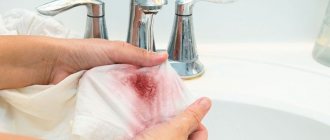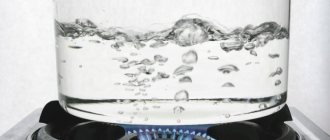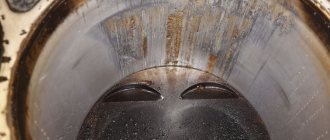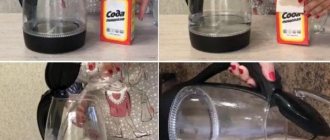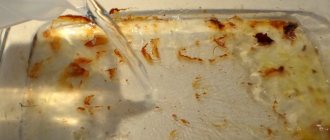Plastic containers are very convenient for storing water supplies. It is lightweight, costs much less than its metal counterparts, but there is a problem - plastic bottles or canisters are very difficult to wash. It is almost impossible to get to the bottom of the vessel to wash off the green residue, but there are life hacks that will help you quickly and efficiently cope with this task.
Methods for cleaning bottles from green deposits
How to wash greens from a bottle?
The difficulty with cleaning a carboy, bottle or other container that has a special design is the inability to hand wash the bottom or sides to remove the green residue. Thus, it is possible to clean only by using an object that can simply be inserted through the neck and then removed from there. Moreover, the main condition for such cleansing is a ban on detergent and other chemicals. If you use canisters, for example, to store drinking water, you know that over time they become dirty and coated with plaque from the inside. The problem with these containers is that they are difficult to clean. They have a narrow neck that you cannot stick your hand into. Therefore, let's look at a question that is pressing for many: how to clean a water canister of greens using folk methods and chemical means.
How to clean a plastic (or any other) canister from deposits, greens and mold on the inner walls? If the container is not cleaned for a long time or water remains in it for a long time, sediment may remain at the bottom, a green coating may appear on the walls, and mold may appear around the neck. To get rid of them, you need to thoroughly clean and disinfect the canister. The following instructions are suitable for cleaning both plastic canisters and containers made of other materials.
As for the barrels, cleaning is simple. Their openings are so large that you can use both hands when cleaning. The use of detergents, absorbents, cleaning powders with water or other suitable means is allowed (usually the cleaning capabilities are indicated on the label on the product itself or on the box). Of course, as with canisters, regular washing and cleaning is recommended to prevent dirt from becoming entrenched inside the barrel.
Regular cleaning of the canister during regular use:
- After pouring out the remaining liquid, pour a little dishwashing gel into the container and fill it with moderately hot water.
- Wait until the product absorbs dirt and possible deposits, then shake thoroughly.
- Pour out the detergent water and rinse the canister several times with clean water to remove any remaining soap.
- Leave the container to dry completely, placing it upside down (ideally positioned so that air can flow through the neck).
Vinegar will help not only wash away greasy oil residues. It is also suitable for thorough disinfection, even without the need for a brush. Attention: do not use this method when cleaning stainless steel products!
- Pour 1 tbsp into the canister. white vinegar, add moderately hot water, shake vigorously.
- Leave the solution to work overnight.
- In the morning, pour out the solution, rinse with clean water, and leave to dry.
Cleaning a canister of gasoline or oil with vinegar and rice:
- Pour hot water into a container, add ¼ tbsp. white vinegar.
- Add some dry rice, close and shake.
- After cleaning, rinse thoroughly and leave to dry.
Cleaning with mustard
Mustard has long been used for washing dishes. And even now, in the era of a wide range of household chemicals and mass advertising, many wise housewives use this powder. Mustard can not only cleanse dirt, eliminate grease. She does this without harm to health.
Mustard will help get rid of green deposits and will perfectly disinfect the canister. It reliably kills all microbes, while simultaneously forming an invisible protective film that prevents microorganisms from developing on the treated surface.
- Pour about ¼ tbsp inside the container. mustard, add hot water. Mix thoroughly and shake.
- In case of severe contamination, you can speed up the removal of plaque with a bottle brush. When cleaning glass bottles, skip this step, otherwise the glass may break.
- Leave the solution to work overnight.
- In the morning, rinse thoroughly with clean water and leave to dry.
You can clean the inside of the canister with flour.
- Pour flour into a container (4 tbsp per liter canister).
- Shake so that it is distributed along the walls.
- Leave for 10 minutes.
- Get enough sleep.
- Pour rice inside and shake (to remove any remaining flour).
- Repeat if necessary.
Boiling
Fill the bottle with hot water, add detergent and wash with a brush. That's all. But what's the secret? What temperature is enough to kill microorganisms and remove unsightly and harmful green deposits?
Thermal destruction of microorganisms shows high efficiency against bacteria, viruses and protozoa, often present in green plaque. To do this, use pasteurization temperature (70 °C) or boiling under normal conditions (not for plastic!). Most bacteria die at temperatures around 60°C. At temperatures around 65°C, pathogens are destroyed within a minute of exposure.
People often encounter this problem when a layer of green plaque appears at the bottom of a plastic bottle.
How to wash greens from a bottle?
Over time, a green coating forms on the bottom, despite the fact that the water is clean. Especially if it's a drinking water bottle. This cannot be avoided, since the environment in the vessel is constantly humid.
The wash is made at home using sea salt. The vessel is filled with salt and detergent. Then clean water is poured. Shake the container until the walls are completely washed. The container is left to infuse for 40 minutes, and after a specified time is washed with running water.
Using soda
A thread is sewn to the foam sponge, its length exceeding the height of the container. It is pushed inside, while the end of the thread remains on the surface of the neck. For convenience, the end of the thread is tied around the neck.
The vessel is filled with soda and a small amount of water. Using a stick, the bottle is cleaned with a sponge until it is clean. The stick should also be much longer than the height of the vessel. At the end of the procedure, the canister is rinsed with plain water several times.
Beans
Regular dry beans will help remove plaque. Grains, approximately 150-250 g, are poured inside. Add 1 liter of water to the beans. The container is closed with a lid and shaken for 8-10 minutes. Stir the contents until the liquid turns a dirty green color. After this, the contents are poured out. At the end, the bottle is rinsed with clean water and dried.
Instead of beans, various cereals are taken. It could be the same rice or millet. But you will need a lot more mixture. The quantity depends on the volume of the container.
Chemical
Suitable if the bottle is not intended for storing drinking water. As a rule, containers are used to store water. In turn, the liquid is used to replenish the water level in the car washer reservoir or for washing hands in nature.
Plaque is removed with a high concentration solution of hydrochloric acid. The liquid is poured directly into the container. After this, the bottle is closed and shaken for 5-10 minutes. If the container is very dirty, the composition is left to get wet. Afterwards, the container is rinsed with clean water 2-3 times.
Drinking water from a container that has been cleaned using this method is strictly contraindicated. Small particles remain at the bottom, which cause harm to the body. As a result, a person cannot avoid serious poisoning.
The product is poured inside and must remain in the container for at least 25 minutes. As soon as the water turns green, it is poured out. After this, the container is washed with running water. The method is suitable in cases where simple methods did not give the desired result.
It is possible to clean containers, and various methods have been developed for this purpose. The choice of method depends on the degree of contamination and the purpose for which the bottle will be used in the future. Cleaning is carried out independently at home.
If left unused for a long time, a green coating may form on the inner walls of the bottle. You can remove dirt in 10 L, 19 L or 20 L bottles using various available means.
A classic device for cleaning containers with a narrow neck. To prevent the inner surface from being damaged when cleaning, use a brush with natural bristles.
We suggest you read How to quickly dry pumpkin seeds
Cleaning with soda
A natural antiseptic that will remove dirt and green deposits from inside the bottle. Pour soda into a container and add a little water until a thick paste forms at the rate of half a pack of soda per 20 liters of water. Leave to act for 2-2.5 hours. To speed up the cleaning process, place a sponge inside and use a long stick to scrub the walls.
The salt will act as an abrasive, and the detergent will remove dirt. Coarse sea salt is suitable for this procedure. Pour the cleaning ingredients into the bottle and add water. Shake the contents thoroughly and leave to act for 30–40 minutes. Then rinse the container with clean water.
Beans
Dry beans clean the walls well of plaque and dirt. Pour the beans into the bottle and add water. Take the ingredients in the ratio of 1 cup of beans per 1 liter of water. Shake the contents thoroughly until the water turns a cloudy green color. Remove the beans from the container and rinse the inside of the container.
How to properly clean mechanically
If classic cleaning methods do not help, you can use non-standard methods for cleaning large containers with a narrow neck.
Newspaper or cloth
To clean, you will need scrap newspaper, baking soda and water.
- First, mix baking soda and water until you get a thick paste.
- Tear the newspaper into small pieces and pour it into the bottle.
- Add the soda mixture and shake the container thoroughly.
- Leave the cleaning agent inside for a while to work.
- Shake the container again.
- Drain the remaining liquid with newspaper and rinse the bottle with running water.
You can clean the bottle with a cloth if you can get river or swamp water nearby. This is necessary so that the liquid inside the bottle blooms and contaminants are easily removed. Dilute clean swamp water, pour into a container and wait until it blooms. After this, place a piece of fabric in the container.
Nettle
In field conditions, nettle leaves can be used as an abrasive.
Procedure:
- Fill the container with warm water to soak the dirt.
- Add nettle leaves inside.
- Shake thoroughly until the coating comes off.
- Drain the contents and rinse the bottle with clean water.
You can use yarrow instead of nettle.
Regular rice scrapes dirt off the walls well. To remove not only dirt, but also to disinfect the bottle, the procedure will require soda.
Procedure:
- Fill the container 1/3 full with hot water.
- Add a few handfuls of rice.
- Add 3 tbsp there. spoons of soda.
- Close the container and shake the contents thoroughly until the dirt comes off.
- At the last stage, rinse the bottle with clean water.
To prevent mold from appearing inside the bottle, dry it well before storing. There are several drying methods depending on the container material.
Glass
For drying, paper that absorbs moisture well or waffle towels is suitable. Roll a napkin or sheet of paper into a tube and place it in a container so that one end sticks out of the neck. Replace wet sheets with dry ones until the moisture completely disappears.
Plastic
Turn the container upside down and place it so that air enters the neck.
Probably, almost every person in his life has at least once washed a container that has a green residue. But how should cleaning be carried out correctly without harming your own health?
The most common reason that greens appear in this kind of container is the so-called chlorella algae, which, in principle, is not capable of causing much harm to the body. But everyone wants to store water in a normal container. For this reason, most housewives are wondering how to clean a container of greens without resorting to harmful agents.
The following simple methods will help you cope with the presence of algae in plastic bottles:
- Baking soda, available in every home, perfectly cleans any container. You need to pour soda into the bottle and leave it for literally a few hours. In this case, the calculation should be as follows - for every twenty liters you will need about half a pack. You will need to add some water to the container. Then you will need a clean cloth, after which you need to shake the bottle for ten minutes. After performing this procedure, it is necessary to rinse the remaining product with running water.
- To clean a plastic bottle, you can use a regular chain, which should be thrown into the container and filled with it. Then shake the container and rinse.
- We wash off deposits on the container with ordinary millet, the amount being calculated as half a kilogram per twenty-five liters. It should be poured into a container and filled with water, after which it should be shaken for ten minutes. You can also use liquid soap to clean bottles.
- The folk method also includes the use of ordinary newspapers, which should first be torn and crumpled. After this is done, the lumps must be placed in the neck and filled with clean water. Then you should shake the bottle and turn it for five minutes.
The methods listed above, as a rule, allow you to immediately clean plastic bottles, but if the housewife is alarmed by these manipulations, then you can use herbs.
There are times when common methods do not help to cope with the problem. In order to wash the containers, they resort to non-standard methods.
Newspaper or cloth
Cleaning using newspaper is as follows. It is torn into small pieces, poured into a carafe, and then a soda solution of increased thickness is added. The contents are shaken and left for some time. After a few minutes, the shaking movements are repeated. The contents of the vessel are poured out.
Nettle
The container is filled with warm water, and the person waits for some time until the dirt falls away. Nettle leaves are placed inside and the vessel is shaken. This is done in such a way that the water rotates in the vessel along with the leaf plates. Thanks to the latter, dirt is removed from the walls of the bottle.
Cereals play the role of not only a food product, but also an excellent cleaning product. The third part of the container is filled with hot water, after which a handful of rice is added there. After adding 3 tsp. soda container is closed and shaken. After draining the contents, the container is washed with clean water. Rice grits scrape dirt and remaining liquid from the walls. Baking soda powder eliminates odor and disinfects the bottle. The method is economical, but requires time and effort.
If you have a clean container in your hands, the next problem arises - how to dry it. In practice, it turns out that using a hairdryer is unsuccessful.
Glass bottle
The method will require any type of paper, but preferably one that absorbs moisture well. Even kitchen towels will do. A piece of paper is rolled into a tube and placed inside. It is advisable that the end sticks out of the container, as it is needed in order to remove the paper.
Plastic
The container is turned upside down and placed on the surface. It is advisable to place something under the neck. Air should come inside, which will speed up drying.
The cleaning principle is the same as for a plastic or glass vessel. Since the thermos is used for making tea or coffee, the walls become covered with a dark coating. Citric acid or fresh lemon will help with this. The thermos is filled with water, to which lemon juice, zest or pulp is added. The container is left overnight.
The most common reason that greens appear in this kind of container is the so-called chlorella algae, which, in principle, is not capable of causing much harm to the body. But everyone wants to store water in a normal container. For this reason, most housewives are wondering how to clean a container of greens without resorting to harmful agents.
Preventive actions
To ensure that the water in the cooler remains fresh after cleaning for as long as possible, preventive measures should be carried out regularly:
- Each time you change a bottle, wipe the bottle receptacle from dust with a clean, damp cloth.
- At least once a week, clean the taps and drain the water from the pan.
- Before installing a new tank, wash your hands well with soap and water.
- Be sure to remove the security label. If this is not done, pieces of paper may fall into the cold water container.
- Never place a container of tap water in the cooler. Remember that the device does not have filters for cleaning. Also, untreated water will contribute to the rapid formation of scale in the hot water compartment.
Changing the bottle should only be done with clean hands and the bottle receiver must be cleaned
According to experts, the cooler should be washed at least once every 3 months. After all, timely and proper care of the device not only extends its service life, but also allows you to use truly high-quality water.
Herbal methods
Our grandmothers also used the following effective methods to clean bottles and other containers with a narrow neck:
- soap using nettle, which can be purchased at a pharmacy, consists of pouring the grass and pouring water over it. After this, you should shake the container and rinse with nettles. Then you need to wash the remaining nettles from the inside and rinse with clean water;
- Instead of nettle, you can use yarrow, which, like nettle, has a disinfecting effect. The cleansing process is absolutely no different from that described above;
- for the best effect, you can try combining nettle and sand mixed with small pebbles, which should be placed in a plastic bottle. This method allows you to clean even completely overgrown containers.
Not every person knows that algae spores simply spread through the air and as soon as they get inside, the bottle begins to become covered with a green coating as the spores multiply. But this happens only in the presence of two conditions: heat and light.
As a rule, such a green coating forms on water containers from April to October, since solar activity is more noticeable during this period.
- soap using nettle, which can be purchased at a pharmacy, consists of pouring the grass and pouring water over it. After this, you should shake the container and rinse with nettles. Then you need to wash the remaining nettles from the inside and rinse with clean water,
- Instead of nettle, you can use yarrow, which, like nettle, has a disinfecting effect. The cleansing process is absolutely no different from that described above,
- for the best effect, you can try combining nettle and sand mixed with small pebbles, which should be placed in a plastic bottle. This method allows you to clean even completely overgrown containers.
We suggest you familiarize yourself with how and how to wash concealer from clothes at home?
If there is fresh grass nearby, then it can also be used, but only on condition that it is pre-chopped, since otherwise it will simply be impossible to get it.
With the help of nettles
It sounds implausible, but the principle of operation is the same as with cereal and newspaper. To implement this method, you need to pick 2-3 large nettle stems and chop them coarsely. The top with leaves can be thrown away.
The stem needs to be pushed into the bottle and 1 liter of cold water added, then shake the container well until clean.
It is important to know that nettles cannot be used to clean hard-to-reach places, such as the handle of a plastic container, since there is a risk that the nettle will remain in the handle.
How to clean a glass bottle with a narrow neck from wine
Most often, such containers have a large volume, so washing them is quite difficult due to their non-standard dimensions. To avoid any difficulties during cleaning, follow certain rules:
- Fill the bottle with water, so the dirt will fall off more easily and it will be easier to clean the surface;
- it’s good if you alternate chemical methods with washing the inner surface with warm water;
- for better results, turn the container upside down (if dimensions allow), so the plaque will fall off under its own weight;
- if the unpleasant smell remains, perhaps it is not the walls that smell, but the bottle cap, try replacing it with a new one;
- Do not experiment with large pebbles as an abrasive, as they may break the container.
Oil does not interact well with water, so for cleaning, choose substances that dissolve fatty compounds well.
Mustard
For the procedure you will need mustard powder and warm water.
Procedure:
- Dilute mustard in water at the rate of 2 tbsp. spoons of powder per 1 liter of liquid.
- Mix the mixture thoroughly so that there are no lumps.
- Pour the substance into the bottle and leave for 2-3 hours.
- Drain the detergent and rinse the container with running water.
If you do not achieve the desired result, repeat the procedure.
Flour absorbs liquid well, so it will perfectly clean the inner walls of the container. You will also need a handful of rice for the procedure.
Progress:
- Fill the bottle with water.
- Add flour to obtain a white liquid.
- Soak the container upside down for 1-2 hours.
- Add rice to the mixture.
- Shake thoroughly and drain the contents.
- Rinse the container with clean water.
Boiling
The method is suitable if you have a pan of suitable size in your arsenal. The advantage of this method is that you can immediately clean as many containers as will fit in the pan. Place containers in it and fill it to the top with water. Add a little laundry soap or dishwashing liquid. Place the pan on the stove and simmer the bottles for half an hour. Cool the container and then rinse with clean water.
If after use the bottle emits an unpleasant odor, pay special attention to its destruction, since it cannot be destroyed by ordinary means.
If you don't have time, try removing the smell with citrus juice. Freshly squeezed lemon, orange or grapefruit juice will do. Fill the container with water and diluted juice at the rate of 1 liter of water per 150–200 ml of juice. Let the mixture sit for 8-9 hours and then wash the container with dishwashing liquid. Repeat the procedure if necessary.
Are you worried about the unpleasant smell from the bottle? There is a simple physical-chemical-biological explanation for this: water, warm environment for a certain time = army of microbes.
Do you think that the absence of plaque is a guarantee that you are drinking clean water? Unfortunately, even clean water can become home to millions of unwanted microbes. When you use a drinking water bottle regularly, bacteria from your mouth enters it. Their reproduction in the container leads to the appearance of an undesirable odor. There is no way to avoid this phenomenon - there is a certain amount of bacteria in the mouth of every person.
That's why it's important to do more than just wash the bottle. It is necessary to clean it in such a way as to remove harmful microorganisms. There are several ways to do this.
- Crush the eggshells into larger pieces.
- Pour them into a bottle, add some dish gel and water.
- Shake.
- Empty the contents and rinse with clean water.
- Before cleaning, wash the bottle with soap and water.
- In a bowl, combine half a packet of baking powder and lemon juice.
- Apply the mixture to a bottle cleaning brush and scrub the entire inside of the container.
- Leave for 10 minutes and then wash.
- This method will help wash various mineral deposits from the walls of the canister.
- Use antacid tablets or denture cleaning tablets.
- Fill the container with water, place 1-2 tablets in it.
- Leave the tablet to dissolve, rinse the container, and leave to dry.
- Prepare some coffee grounds, which you can dilute with warm water.
- Pour the mixture into the bottle and shake thoroughly.
- After a few minutes, pour out the solution, rinse the container, and leave to dry.
- Pour ¼ tbsp into a container. salt, pour warm water.
- Close, shake, leave for 1-2 days.
- Rinse and leave to dry.
To keep the canister clean, it is recommended to take time to properly disinfect it every 7-14 days. This can be done using simple ingredients available in every home.
Everyone in the house has plastic bottles. They usually store water in order to use it during the next outage or for washing the car. Sometimes a green coating appears in a plastic bottle, which is not easy to remove.
First way
A mixture based on sea salt and dishwashing gel will help clear the bottle of greens. First, pour some product into the canister. Add two to three tablespoons of coarse salt. Dilute the mixture with a small amount of water.
Shake the container until all the walls are completely washed. Leave the solution for another 20-30 minutes, then rinse thoroughly with running water.
To prevent the greens from starting again, dry the canister inside.
The advantage of this method is that it does not require the use of toxic substances. After this treatment, the container can be reused to store drinking water.
Second way
A life hack that involves cleaning a container with soda. Find a stick that is the same length as the bottle. Take a regular sponge and use a needle to sew a thread. The length of the thread should be longer than the canister itself.
Push the sponge to the bottom of the container. Make sure that the thread remains on the surface of the neck. Pour in 100 grams of soda, and then use a stick to make rotational movements along the bottom until it is washed off. To make the abrasive better clean the surface, you can add a little water.
To complete the procedure, rinse the bottle under cool water several times so that no soda remains at the bottom.
Third way
How can I clean a plastic bottle so that after treatment I can drink water from it? Regular dry beans will help get rid of plaque.
Pour in 150-200 grams of grains, and then pour in about a liter of water. Close the opening with a lid and shake the container for 5-7 minutes.
Once the contents in the bottle turn a dirty green color, you can pour it out. After completing the procedure, rinse and dry the bottle.
Instead of beans, you can clean the inside of the bottle from green deposits using regular millet. You will need 0.5 - 1 kg.
Fourth method
The next method is considered chemical. It is better to use it if drinking water will not be stored there. This liquid can be used to wash your hands outdoors or pour into a car washer barrel.
To remove plaque, take a concentrated solution of hydrochloric acid. Pour it into a container. Close the lid and shake the bottle thoroughly for about two to three minutes.
After performing such manipulations, pour out the solution and rinse the surface with running water several times.
Fifth method
One of the easiest ways is to use cleaning powders or liquids to clean pipes. After this method, it is also undesirable to drink water, since particles may remain at the bottom. Serious poisoning may occur after consumption.
We suggest you familiarize yourself with How to wash a multicooker outside and inside from grease and burnt food
Pour in the selected product and leave in the container for 15-20 minutes. As soon as the water turns green, you can pour it out. After this, simply rinse with running water.
Getting rid of greens in a plastic bottle is not that difficult. But it is worth remembering for what purpose you are doing the cleansing in order to prevent poisoning of the body.
Every home has bottles with a narrow neck in the kitchen. This container is used for syrup, wine, vegetable oil and other products. Made from plastic or glass. Housewives do not throw it away, as it will be useful in the future. Only for reuse you need to know how to clean this bottle with a narrow neck.
A viscous liquid is a lipid mixture that does not interact with water. Therefore, other methods and means are used for removal. Substances are selected that can penetrate the fat molecules and remove them from the surface.
Mustard
The product is used in powder form. The bulk mixture is diluted with hot water. The proportion is as follows - for 1 liter of water take 2 tbsp. l. mustard powder. The ingredients are mixed so that there are no lumps, and the liquid is poured into the bottle up to the neck. After 2-2.5 hours, the liquid is drained and the container is rinsed with clean water. Repeated cleaning procedure will improve the effect.
The bulk mixture is used due to its ability to absorb various liquids. The bottle is completely filled with water, after which flour is added. The result should be a white liquid. The container is turned upside down so that the dirty places are covered with the solution. After a while, a handful of rice is added to the vessel. After shaking, the bottle is emptied of its contents. After washing the vessel with water and detergent, rinse.
Boiling
This method comes in handy if you have accumulated a lot of dirty containers and don’t have enough time to clean them. A large saucepan is filled with dirty vessels and filled with water to the very top. A small amount of detergent is added to the water.
The pan with the container is placed on the stove over medium heat. Boiling should be carried out for 25-35 minutes. After turning off the stove, leave the contents of the pan to cool. The container is taken out and washed with clean water. It is advisable to use a piece of laundry soap instead of detergent.
How to wash greens in a water bottle using household chemicals
Mold can be removed using chemicals. This method is suitable for large containers (10 liters or more) that are intended for storing process water .
Cleaning procedure:
- Pour in concentrated hydrochloric acid solution.
- Close the lid and shake the bottle well for 5 minutes.
- Rinse the container with clean running water.
- If necessary, repeat the manipulation again.
You can wash plastic bottles using special cleaning powders and pipe cleaning liquids:
- Pour your chosen cleaning product into the container.
- Leave for 15-20 minutes and pour out the contents.
- Wash the bottle well with running water.
Do not use containers that have been washed with aggressive cleaning agents to store drinking water. The liquid absorbs the remaining powder or gel and becomes hazardous to health. If you drink such water, it can lead to severe intoxication.
You can clean the canister using the “grandmother’s” method, which is based on the use of beneficial herbs. For this purpose, nettle or yarrow are used. Place the herbs in a canister, fill with water, shake a little and leave for several hours. Then rinse the container well and dry.
Home remedies that are safe for health will also help you wash a plastic bottle:
- Pour citric acid solution (100 g per 20 liters of water) into a container and leave overnight. In the morning, wash everything with running water and dry well.
- Coca-Cola will help remove mold. Pour the sweet carbonated drink into a container and add citric acid. Leave for a few minutes and then rinse well.
- Add 2-4 tbsp. l. soda and add vinegar. Wait for the chemical reaction to complete and wash the container thoroughly.
How and with what to wash the bottle from plaque inside?
Plastic is a modern material from which many household items are made, including dishes. Products made from it are budget-friendly and very convenient to use. Thus, many people use plastic bottles to store water supplies. But over time, a green coating appears on their inner walls.
You can also clean green water from a water canister using chemicals. But keep in mind that after using chemical cleaners, it is very important to thoroughly rinse the container. Particles of substances remaining on the walls can be harmful to health.
How and how to clean the canister:
- Cleaning powder with water. One way to use a greens canister is to fill it with non-powder, add water and shake well. If you repeat this process several times, the result will be excellent.
- Savo or sodium acid. This is a harsh chemical option. Pour cleaning agent or sodium acid into a container and mix with water. Shake, pour, rinse with clean water.
- Rice, boiling water and dish gel. An interesting way to wash a canister is to pour rice into it, pour boiling water over it, and add dish gel. Shake well, leave for a while, shake again. The walls of the product will become clean, the plaque will disappear. Do not use boiling water on plastic bottles!
Cleaning with soda
Using cereal
The method is easy to use, but requires physical effort. This method is suitable if you urgently need to clean the eggplant from mold, but you have nothing on hand except cereal. Mix it with water and shake the bottle. The main thing to remember is that the place that needs to be cleaned is at the lowest point. In this method, you can use any cereal that is available, but priority is given to buckwheat, rice, and millet.
Traditional methods
Green plaque is a problem not only for plastic containers, but also for glass ones.
They used simple and cheap methods:
- The most common method is using a special brush and soda.
- Add a little dishwashing liquid or soapy water and crushed egg shells to the bottle. The lid must be closed and the liquid in the bottle must be shaken until a positive result is obtained. Then the detergent is poured out and the dishes are rinsed with clean water. In some cases, the procedure must be repeated.
- Fill the dirty dishes one-third full with water, add baking soda at the rate of half a pack per 25 liters of water. Place a piece of synthetic fabric such as nylon into the bottle and shake vigorously. To make it easier to get the fabric, you can hold it at the neck.
- Finely tear the newspaper and place it in a bowl, add a little water just to wet the paper, and shake vigorously. The method is not the most convenient, since it is then quite difficult to wash the paper out of the bottle.
- You can use clean (calcined) sand, sawdust with the addition of liquid soap, preferably laundry soap. This method may also not be to everyone’s taste due to the difficulty of washing.
- You can wash the inside of a plastic bottle with a foam sponge. To do this, tie the sponge in the middle with a long rope and push it into a container using a thin stick, add 100-200 grams of baking soda. Then you can add water and shake the bottle vigorously.
- To clean the container you will need dishwashing gel and coarse sea salt. To wash a five-liter bottle, you need to prepare a solution at the rate of 1 glass of warm water, 1 tablespoon of gel, and 2-3 tablespoons of salt. Pour the finished product into a bottle and leave to soak for an hour. Next, you need to vigorously shake the bottle and rinse it. Usually everything can be cleaned the first time, but sometimes you have to repeat the procedure. Salt acts as a soft abrasive that does not damage the walls of the cookware. What is attractive about this method is the availability of available materials and their low cost.
- A simple metal chain can be used to clean green deposits from the bottle. Filled with a small amount of water and shaken well, the chain acts as an abrasive. Its links are smooth, so they do not leave scratches.
- Beans, peas, and millet will help defeat greens. To do this, pour 100-200 grams of legumes or half a kilo of cereal into a contaminated bottle, fill it with four glasses of water and shake for 5-10 minutes. Usually after this procedure the liquid becomes green and dirty, and the dishes become clean and transparent.
- You can wash greens in a plastic bottle with dry mustard. Three tablespoons are enough for a five-liter container. First you need to shake the bottle, and then add water and shake with it. If the contamination is very strong, you should leave it to soak for a while and then wash it clean.
- Dry pharmacy nettle is also used for cleaning bottles. A handful of grass is poured into the bowl and two glasses of water are added. Then you need to shake the bottle vigorously. You can enhance the effectiveness of the product with the help of another component - river sand. You can replace nettle with dry yarrow. This herb has a disinfecting effect, so it also fights harmful bacteria. Fresh nettle is no less effective. This “washcloth” is good to use on hikes or at the dacha. The crushed leaves and stems are placed in a bottle, a glass or two of water is added and then you need to proceed as in the other methods described.
Cleaning a canister from green deposits using folk methods
Cleaning with soda
It is important to understand that you need to clean not only the bottle, but also all parts of the cooler that come into contact with water. Read this entire article on how to clean a water cooler.
If only the water container needs washing, you can clean it using:
- citric acid;
- soda;
- vinegar;
- salt with dish gel.
The cleaning process is no different from the procedure for washing glass and other containers. The main thing is to rinse the container thoroughly and be sure to dry it completely. If there is heavy contamination, first fill the bottle with warm water.
Using soda
Soda, being a budget antiseptic, will help cope with contamination and also sterilize the container. With its help, you can prepare the bottle for new use and keep the container fresh.
To clean the eggplant from plaque, you need 20 g of soda per 1 liter of water. If desired and heavily soiled, take up to 50 g of soda. Warm water should be added to it so that it is 3-5 cm above the bottom of the bottle.
Then, cover the container with a lid and wait for a reaction. Afterwards you should shake the eggplant well. If the walls are heavily soiled, we recommend adding barley, peas or buckwheat to the mixture. Thanks to additional mechanical action, you will quickly achieve cleansing of contaminants.
Use of chemicals
After cleaning with aggressive chemicals, the dishes should never be used for drinking water. The water in it will only be suitable for technical consumption. You can clean a plastic bottle from green deposits like this:
- A five percent solution of hydrochloric acid is poured into the dishes and rinsed for a short time. The lid must be screwed on tightly. Next, pour out the solution and rinse the dishes thoroughly under running water.
- Pipe cleaner is poured or poured into the container and topped up with water. After 20-30 minutes, you can pour out the contents and wash the dishes.


